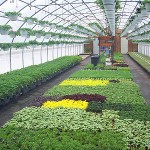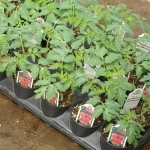How Do I Pick The Right Plants?
After you have decided what vegetables you want to grown and how many of each you will need to get the harvest that you want, the next step is finding good, quality plants. What makes a good plant? Where can I find good plants? I will explain how to determine if plants are good quality or if they are poor, sickly plants that might not thrive in your garden.
What Makes A Good Plant?
If you are buying your garden plants already started and ready to plant, you need to make sure you choose healthy, disease-free plants. I am not going to tell you to go just anywhere to find your plants. I believe that if you are going to be a serious gardener, you need to find a professional greenhouse or garden center that knows what they’re doing, has staff that knows about the plants they sell and can answer your questions about how to take care of your plants, and a place that is taken care of. The greenhouse needs to be clean, obviously there will be soil and water scattered here and there, but there should not be weeds growing under the benches, there should not be fungus, mold or moss growing on the benches or walkways….it’s easy to tell if they have good sanitary practices.
anywhere to find your plants. I believe that if you are going to be a serious gardener, you need to find a professional greenhouse or garden center that knows what they’re doing, has staff that knows about the plants they sell and can answer your questions about how to take care of your plants, and a place that is taken care of. The greenhouse needs to be clean, obviously there will be soil and water scattered here and there, but there should not be weeds growing under the benches, there should not be fungus, mold or moss growing on the benches or walkways….it’s easy to tell if they have good sanitary practices.
The big box stores (Wal-Mart, Lowes, Menard’s, etc.) do not normally have much knowledge about the plants they sell. They usually get plants in just before time to plant and hope to sell them before they need to do much maintenance on them. They usually don’t take very good care of the plants they get, watering is one of the most important factors to plant health. If the plants are not watered and get too dry, their health is at severe risk. A lot of the time, the small, local grower is the best place to get your plants. They take the time to make sure the plants are healthy and well cared for.
What Does A Healthy Plant Look Like?
 Healthy plants are green, they have sturdy stems, they have a vigorous root system, their roots are white, they have no insects living on them.
Healthy plants are green, they have sturdy stems, they have a vigorous root system, their roots are white, they have no insects living on them.
That sounds easy, right? Let’s break it down.
- Healthy Plants Are Green – Usually dark green, plants will vary in color from a lighter green to dark green. Your plants should not be yellow. When plants start turning yellow, this is a sign of over/under watering or poor nutrition (not being “fed” enough. Try to find dark green plants. If plants are turning yellow because of under watering or not enough feed, this can be fixed when you get them home.
- Healthy Plants Have Sturdy Stems – Your plants should not have spindly, stretchy stems that struggle to hold the plant up.
- Healthy Plants Have White, Vigorous Roots – The roots on your plants should be bright white and they should go through the bottom of whatever pot they are in. You don’t want them to be “root bound”, but you want them to have lots of roots.
- Healthy Plants Don’t Have Bugs – Inspect your plants closely for insects. Aphids, White Fly and Spider Mites are some common problems for lots of plants. Insects can be taken care of, but it would be better to not start with a problem…and if you do need to take care of an insect problem it is best if you do not use harmful insecticides. Read more at this helpful article – ‘How to get rid of spiders in your house, basement or garage’.
Starting with healthy plants, will get your garden off to a great start!